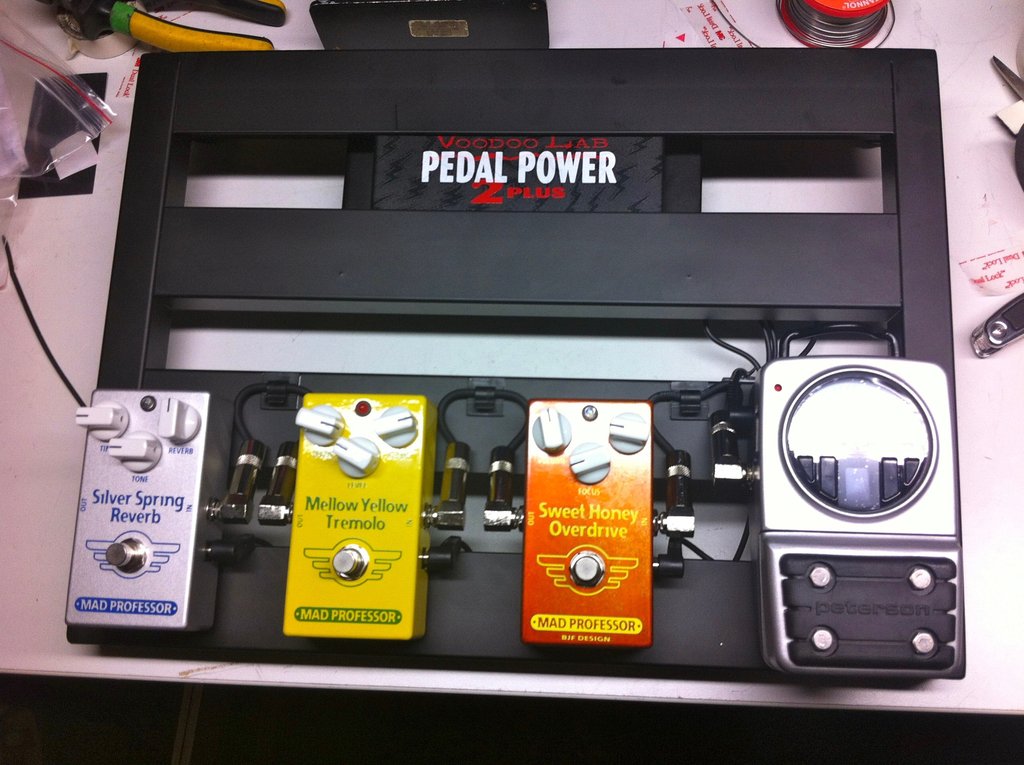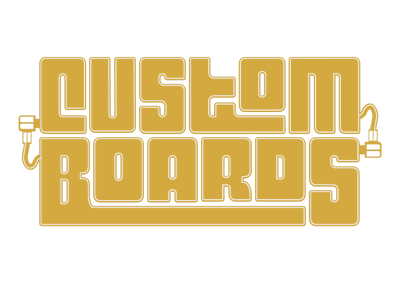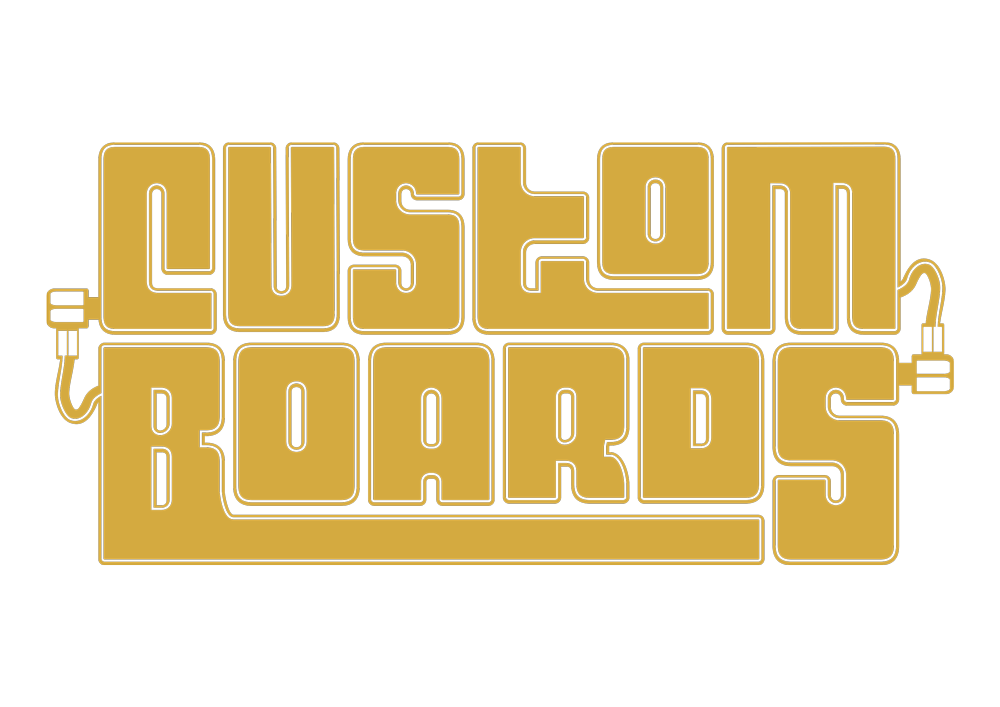How do I choose the right power supply for my pedals?
The most common cause of problems in pedalboard project is not paying enough attention to the choice of a power supply unit (PSU). Even if the voltages may be correct for all pedals, there are often problems with noise interference and therefore the overall quality of the signal. Extraneous noise can be a nasty distraction for you and your audience during ballads and quiet parts in songs.
In our view a power supply is the pedalboard’s engine, and should be chosen carefully to fit its purpose. Otherwise your rig the won’t be operating correctly. Silence is an important part of any music, and only a well-chosen power supply will help you to eliminate extraneous hum and buzz.

Sadly, many people start their pedalboard project by gathering together a number of pedals, slapping the effects on a fitting frame, and only thinking about the need for a power supply as the last item on the list. Many musicians don’t have a good grasp of the principles behind powering a pedalboard, making it hard for them to choose the correct type of power supply. Many musicians also don’t have the time necessary to sift through all the available information by themselves. This is where this guide steps in.
The trinity of effects, frames and power supplies
In reality you should look at designing a pedalboard as a three-way game. Once you’ve decided on the necessary effects and additional AB-boxes, bypass loopers etc., you can choose to move forward, either by selecting the power supply first and choosing the pedalboard frame to fit the power supply, or vice versa. Power supply manufacturers follow the trends and developments on the pedalboard frame front very closely, which means that you should be able to find at least one power supply-model for any frame on the market.
We are making things easier for you by listing all compatible pedalboard frames – along with their installation requirements – next to each power supply we sell online.

If you’re currently troubled by signal hum, or if you’re using a whole range of separate wall-warts to power your pedals, we’d strongly suggest you get yourself a single professional power supply to power all your effects in one go.
Will my power supply work all around the globe?
A power supply uses the AC off the wall and transforms it into the voltages and currents needed to power your pedals. European and Australian wall sockets supply 230 volts, but in the USA and Southern America the wall grid delivers 115 volts. Japan is the third major territory with its own voltage, namely 100 volts, but, because of Japanese hospitality and engineering knowhow, most venues are able to offer any voltage a visiting band might require. This means that your main problem for European touring band will be the Americas and vice versa.
If you’re planning on playing in the States with amplifiers hired locally, it would be most convenient to use a pedalboard power supply running on 115 volts. Other option is to use a local step-up transformer to pump up the 115 volts to the 230 volts you need.

The toroidal transformers of Voodoo Lab power supplies work only with a single voltage, which is why the company produces two different versions of each of their power supply models – one for US and one for Europe.
All Cioks Standard- and Professional-ranges power supplies come with a voltage switch, allowing you to switch from 230 to 115 volts. Taking into account the exquisite facilities in Japan, this feature makes Cioks power supplies fit for use all around the globe.

All switch-mode power supplies can generally be used anywhere. The latest switch-mode designs by Cioks and Voodoo Lab can be used at any voltage between 100 and 240 volts. All you need to do is to pack the correct wall plugs.

One power supply or more?
If you’re using a large number of effects you could try powering your pedalboard with two power supplies, instead of a single, large one. Especially if the musician already owns a power supply, finding a suitable second power supply might be a natural choice. This choice should be based on the amount of power needed, as well as on how the second power supply can be integrated with the first one already on board.
Some of the Voodoo Lab and Cioks models come equipped with an parallel AC output routed directly from the power supply's AC input. This makes it easy to use two power supplies simultaneously, while running only a single power cable from the pedalboard to the wall AC grid. Cioks offers special adapter cable for use with their older power supplies, and it’s easy to make a link cable for Voodoo Lab power supplies yourself with regular spare parts. As a rule of thumb you could say that a main power supply should include a dedicated AC-link output to make connecting an additional power supply easier. If you’re lucky, your old power supply already comes equipped with a link socket, which would make expanding your system a doddle.
As a rule of thumb you could say that a main power supply should include a dedicated AC-link output to make connecting an additional power supply easier. If you’re lucky, your old power supply already comes equipped with a link socket, which would make expanding your system a doddle.
But it’s far from the end of the world, should your power supply not include a link output. In such cases a simple two- or three-outlet power strip can be installed underneath the pedalboard frame, supplying the two PSUs, without having to run two AC-cables to the power grid.


Do you need to take an expansion into account?
If you feel you might want to add more pedals to your pedalboard in the future, or if you’d like to power an external pedal effect using the board’s power supply, you should select your power supply accordingly, by leaving one or two vacant outputs.
Another point to consider is the possible later addition of digital effects, which would mean you’d have to make sure that your power supply should at least have one output supplying 400 mA (or more), even if your currently connected pedal runs on 10 mA, or less.

*****
If you have purchased all the parts and components but get a feeling that you might not be up to the task after all, we can make your pedalboard for you, using the components you have bought from us. Don’t worry, we won’t let anything go to waste.

